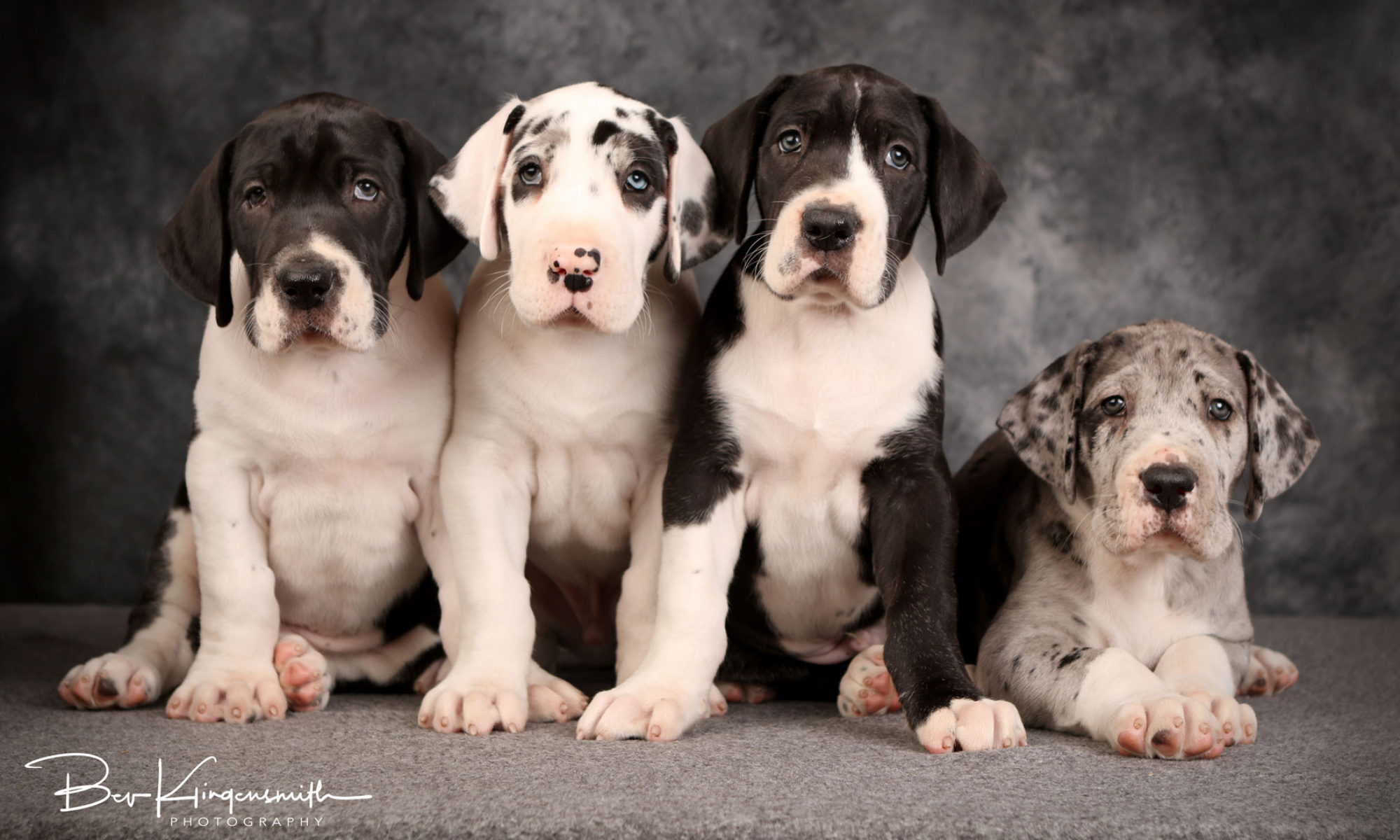Kizzy picked up two more points, going Winners Bitch and Best of Opposite both days in Marshalltown. Picture hopefully coming soon!
Kizzy also had her x-rays done for hips, elbows and patellas. Everything looked great on the x-rays, so now we’re just waiting for the OFA expert review. I will post link to her OFA results as soon as they are available.
Great Danes have four recommended health tests prior to the decision to breed them – hips, thyroid, cardiac and eyes. A breeder might choose to do additional tests as well.
These health tests go beyond a simple “well dog” check-up at the vet. While a dog might not exhibit any signs of a health issue, they can still pass problems to offspring. They might be a carrier of the problem; might not be exhibiting symptoms yet; or even have a non-symptomatic level of the problem (and paired with the wrong breeding mates, the puppies could then be symptomatic).
Health tests aren’t about getting the best rating, they’re about knowing what potential issues your dog may pass on to offspring and how to make smart breeding choices. The more information a breeder has – on the breeding candidate and their relatives – the more informed their breeding decisions.
For hips, a vet takes an x-ray and then the x-rays are submitted to OFA, PennHip, or OVC. I am only familiar with OFA, but will say that putting the dog under anesthesia is not required for the x-rays. I spent around $250 for Kizzy’s x-rays and OFA submission (this included all the costs for the hips, elbows and patellas).
For thyroid testing, any vet can draw the blood sample and then it is sent to an OFA approved lab for testing.
For cardiac testing, a board certified cardiac specialist is required. This screening can not tell you if the dog will ever come down with a heart problem, but it can detect current problems, big and small.
For eyes, again a specialist is required. A board certified veterinary ophthalmologist examines the dog’s eyes for any eye issues (e.g. cataracts, eye lid issues, etc.) and the results are sent into CERF, whose database is linked with OFA. For breeding dogs, eye CERFs should be repeated as the dog ages. I just had Skyy’s CERF done again and spent $30 on the exam an additional $8 for CERF submission.
Once a Great Dane has these four tests completed and the results are public, the dog earns a CHIC number. A dog does not have to “pass” these tests in order to receive a CHIC number, however the owner has to be willing to share good and bad testing results.
A CHIC number is not necessarily indicative of good health, rather the owner’s support of the open health database, which benefits our breed. By allowing the information to be publicly available, owners of related dogs gain perspective when making their breeding choices. Having a health issue arise should not be a dirty little secret – only by sharing the test results can the breed move forward.
Always verify any claims of health testing – OFA’s online database – before purchasing a puppy.
